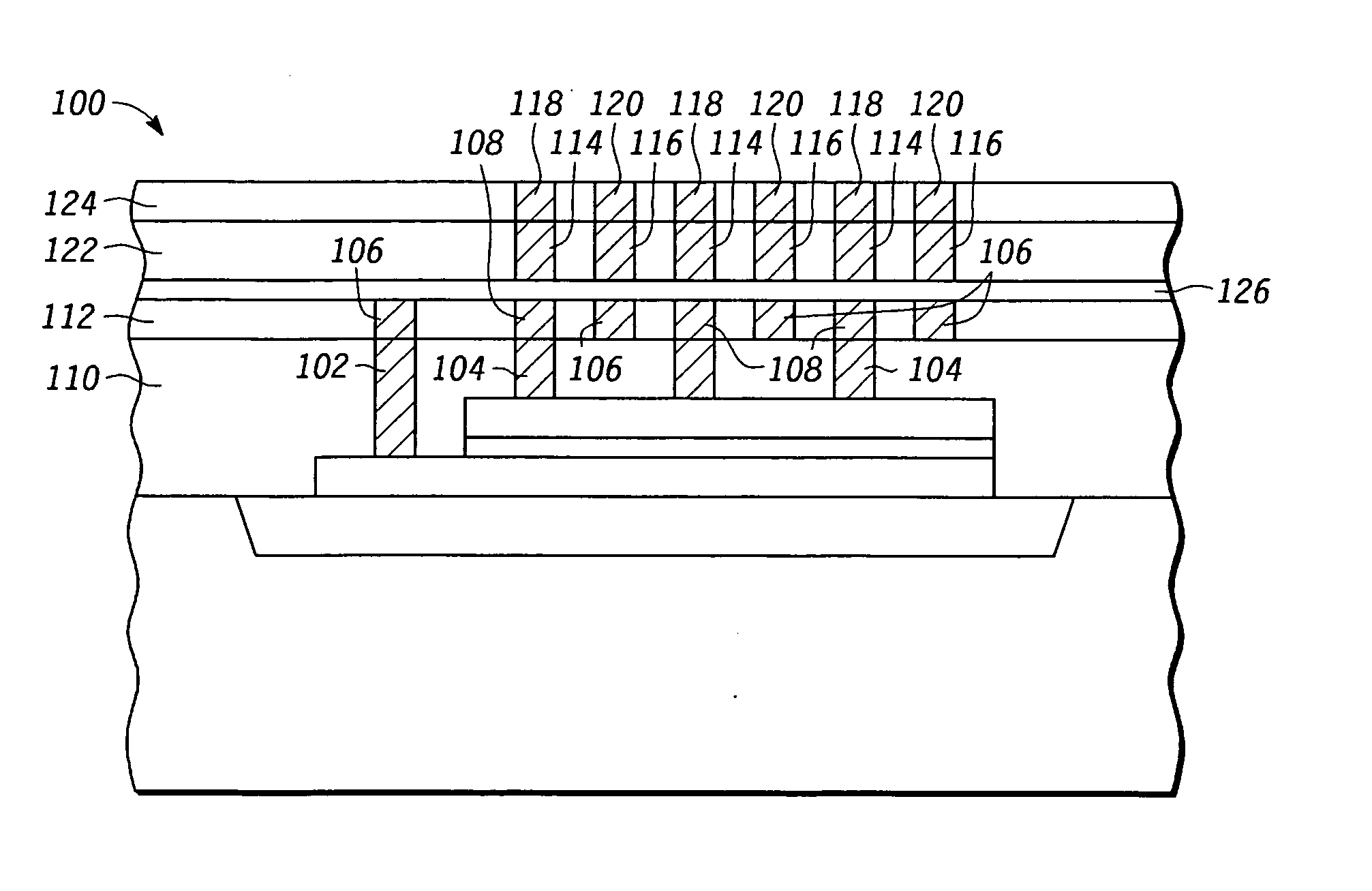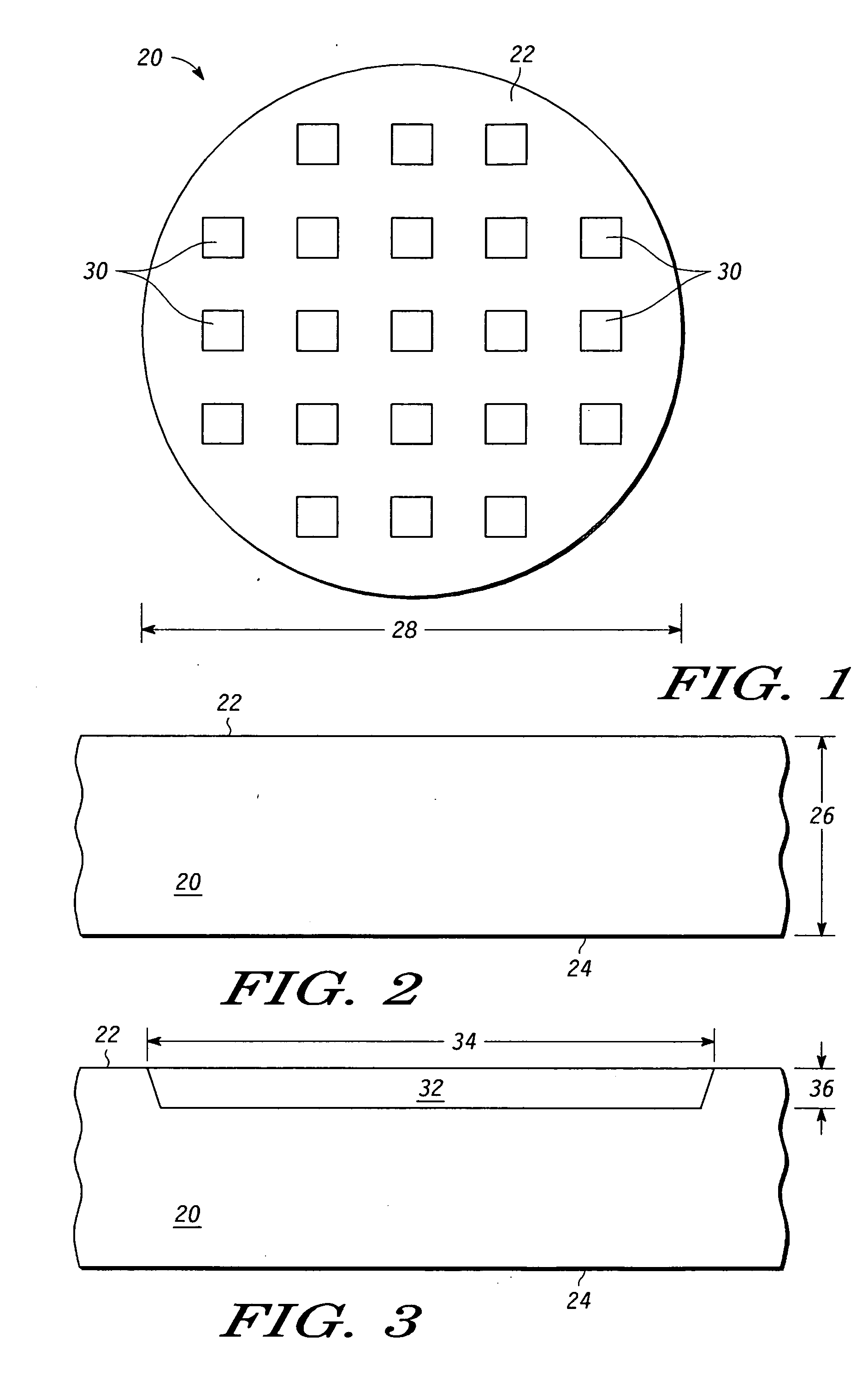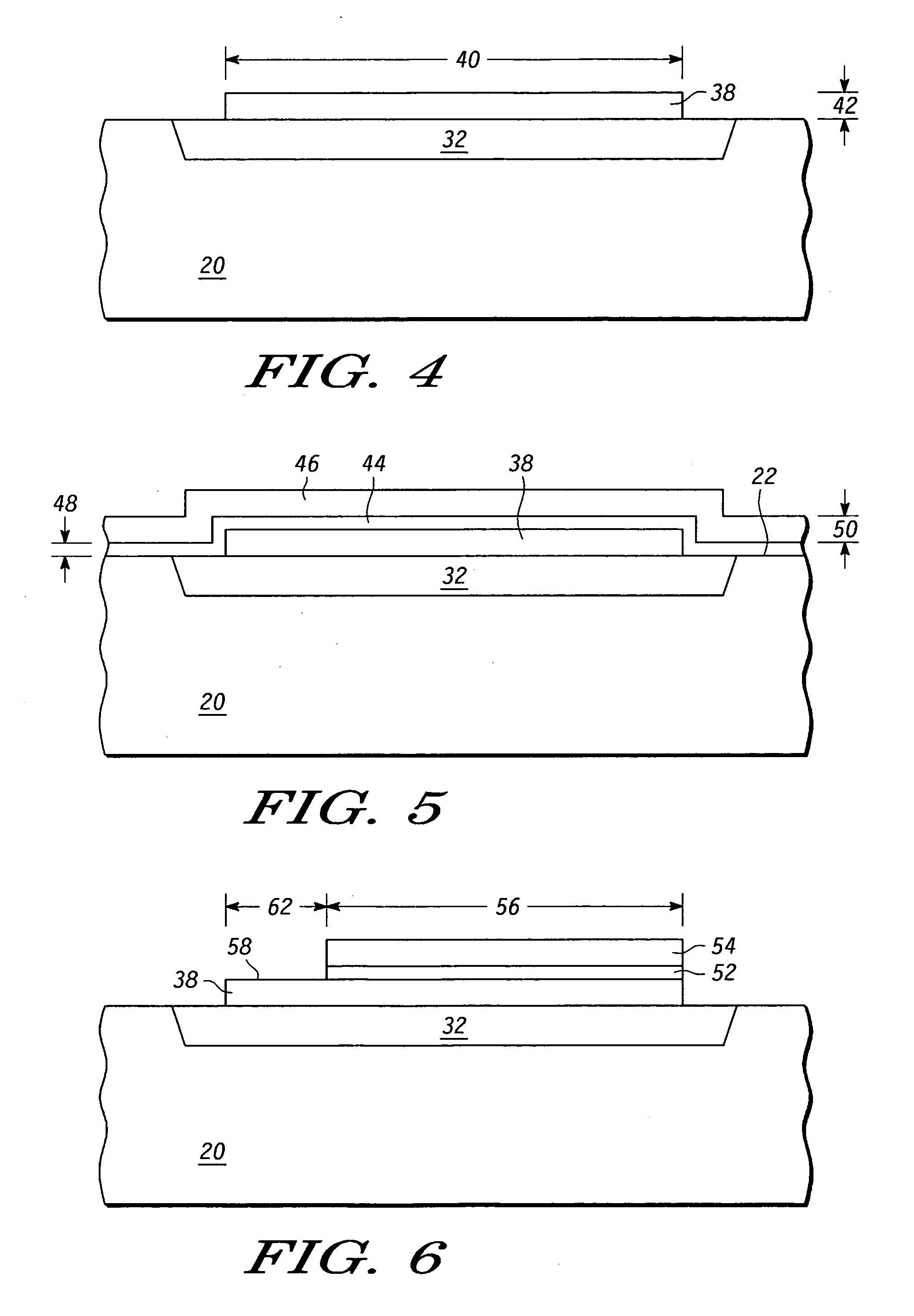Composite capacitor and method for forming the same
a composite capacitor and capacitor technology, applied in the direction of fixed capacitors, stacked capacitors, fixed capacitor details, etc., can solve the problems of difficult to find space on each die for all of the desired components, affecting the performance of passive device components, capacitors, etc., and reducing the number of parts
- Summary
- Abstract
- Description
- Claims
- Application Information
AI Technical Summary
Benefits of technology
Problems solved by technology
Method used
Image
Examples
Embodiment Construction
[0019] The following detailed description is merely exemplary in nature and is not intended to limit the invention or application and uses of the invention. Furthermore, there is no intention to be bound by any expressed or implied theory presented in the preceding technical field, background, brief summary, or the following detailed description. It should also be noted that FIGS. 1-11 are merely illustrative and may not be drawn to scale.
[0020]FIG. 1 to FIG. 9 illustrate a method for forming an electronic (or microelectronic) assembly, or a semiconductor device, according to one embodiment of the present invention. A capacitor having first and second conductors is formed on a semiconductor substrate. A build up layer is then formed over the capacitor. The build up layer includes first and second sets of conductive members, such as conductive traces. The first and second sets of conductive members form interdigitated “combs” to maximize the fringe capacitance therebetween and form ...
PUM
 Login to View More
Login to View More Abstract
Description
Claims
Application Information
 Login to View More
Login to View More - R&D
- Intellectual Property
- Life Sciences
- Materials
- Tech Scout
- Unparalleled Data Quality
- Higher Quality Content
- 60% Fewer Hallucinations
Browse by: Latest US Patents, China's latest patents, Technical Efficacy Thesaurus, Application Domain, Technology Topic, Popular Technical Reports.
© 2025 PatSnap. All rights reserved.Legal|Privacy policy|Modern Slavery Act Transparency Statement|Sitemap|About US| Contact US: help@patsnap.com



